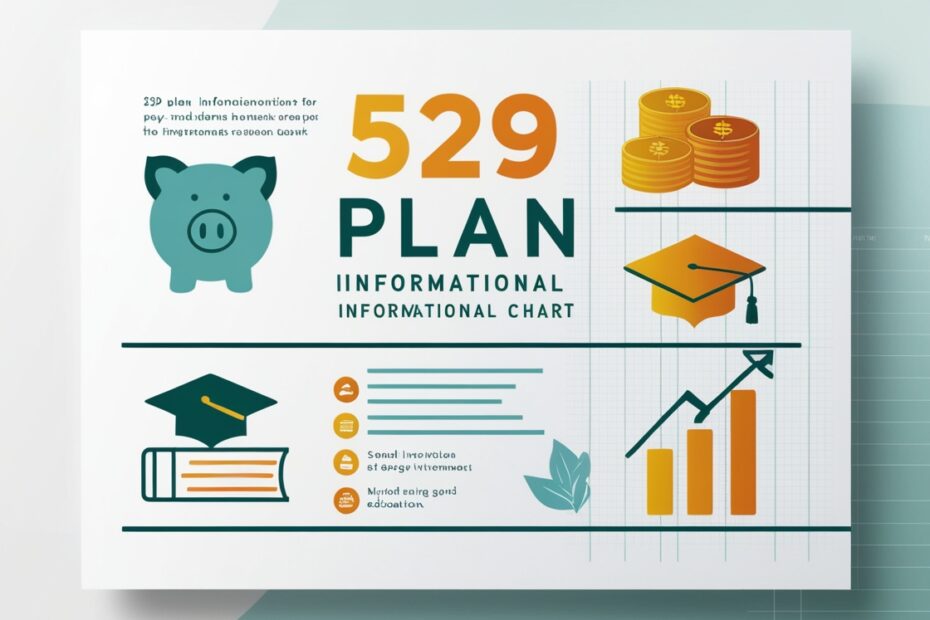Introduction
With rising education costs, saving for college or other educational expenses is a growing concern for many families. One of the most effective tools for education savings is the 529 plan, a tax-advantaged investment vehicle designed to encourage savings for future education expenses. This article explores the ins and outs of the 529 plan, how it works, its benefits, and the various strategies for maximizing its potential.
What is a 529 Plan?
A 529 plan is a state-sponsored investment account that allows individuals to save for education costs in a tax-advantaged way. Named after Section 529 of the Internal Revenue Code, these plans come in two types:
- Prepaid tuition plans: These allow the account holder to purchase future tuition at today’s rates.
- Education savings plans: These allow you to invest in various portfolios that grow tax-free, provided the withdrawals are used for qualified education expenses.
How Does a 529 Plan Work?
Setting up a 529 plan is straightforward. You open an account with a 529 plan provider, which is usually managed by the state or an approved financial institution. From there, you make contributions that are invested in a variety of portfolios, ranging from conservative bonds to aggressive stocks, depending on your risk tolerance.
One of the key benefits is that the growth in the account is tax-deferred, meaning you won’t pay taxes on earnings as they accumulate. When you withdraw funds for qualified education expenses, such as tuition, books, or room and board, the earnings are tax-free.
Key Benefits of a 529 Plan
- Tax Advantages: The tax-deferral on growth and tax-free withdrawals for qualified expenses are the primary benefits. Some states also offer state tax deductions or credits for contributions to their 529 plans.
- High Contribution Limits: Unlike other tax-advantaged accounts, 529 plans have high contribution limits, often over $300,000 per beneficiary, depending on the state.
- Flexibility: Funds in a 529 plan can be used for a wide range of education expenses, including tuition, room and board, books, and even certain K-12 expenses. The plans can also be transferred to other family members if the original beneficiary does not use all the funds.
- Control of the Account: The account owner retains control over the account, even after the beneficiary reaches adulthood. The owner can also decide how the funds are used and can change the beneficiary if needed.
- Potential Impact on Financial Aid: A 529 plan is considered the account owner’s asset in financial aid calculations, meaning it has less impact on financial aid eligibility compared to other assets in the beneficiary’s name.
Who Should Open a 529 Plan?
A 529 plan is ideal for anyone looking to save for education expenses, whether it’s for your child, grandchild, or even yourself. Parents of young children often benefit the most since they have more time to allow their investments to grow. However, even if your child is closer to college age, the tax advantages still make the plan a great option for last-minute savings.
Qualified Education Expenses
One of the most important aspects of a 529 plan is understanding what constitutes a qualified education expense. These include:
- Tuition and fees
- Room and board (if enrolled at least half-time)
- Books and supplies
- Computer equipment, software, and internet access
Recently, the scope of 529 plan usage has expanded to include up to $10,000 per year for K-12 tuition and repayment of up to $10,000 in student loans for the beneficiary or their siblings.
Strategies to Maximize the Benefits of a 529 Plan
Start Early and Contribute Regularly
The earlier you start contributing to a 529 plan, the longer your investments have to grow tax-free. Even small, regular contributions can make a significant difference over time, thanks to the power of compound interest.
Take Advantage of State Tax Benefits
If your state offers tax deductions or credits for 529 plan contributions, be sure to take full advantage. Some states allow for deductions of up to $10,000 for contributions made into a state-sponsored 529 plan. Review your state’s specific guidelines to maximize your benefits.
Adjust Investment Options Based on Timeframe
Most 529 plans allow you to choose between different investment portfolios, such as age-based options that automatically adjust the asset allocation as the beneficiary nears college age. Early on, you can afford to be more aggressive with your investments, but as college approaches, it’s wise to shift toward more conservative options to protect your savings.
Gift Contributions
Grandparents or other family members can contribute to a 529 plan as a gift, which can be especially useful when planning for a child’s future. Many 529 plans even allow for online gifting platforms, making it easy for others to help build the account balance.
Use a 529 Plan for More than Just College
With the recent changes to the law, 529 plan funds can now be used for more than just college tuition. Families can use these savings for K-12 private school tuition, apprenticeship programs, or to pay off student loans. This flexibility makes the 529 plan an even more attractive option for education savings.
Also read: Ruodan Liu Dissertation
Conclusion
The 529 plan is one of the most powerful tools available for those looking to save for education costs. With its tax advantages, flexibility, and high contribution limits, it provides families a way to plan for their children’s or even their own education expenses. By starting early, contributing regularly, and taking advantage of state tax benefits, you can maximize the potential of your 529 plan and ensure that your education savings grow over time. Whether you’re saving for a newborn, teenager, or even your own education, the 529 plan offers a practical and efficient way to meet those goals.
